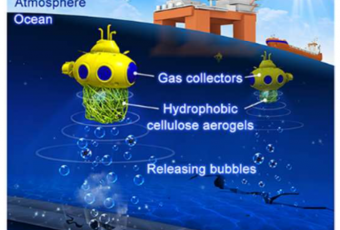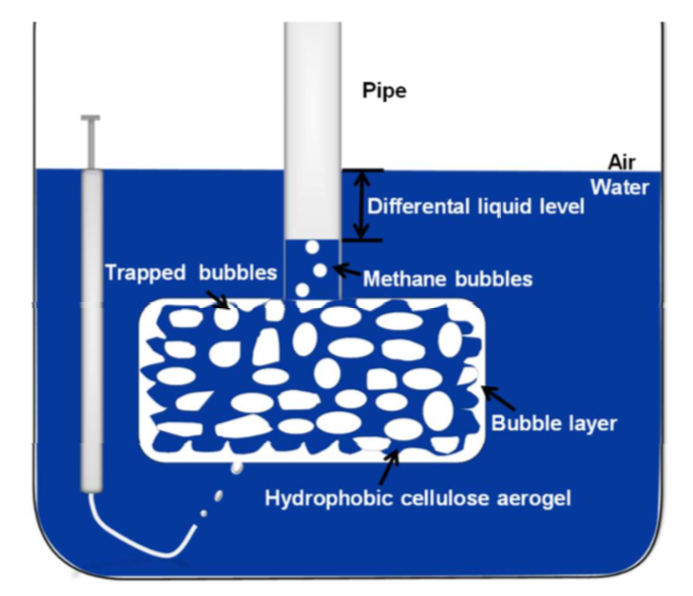Cotton is widely considered as a promising precursor material for aerogels due to its biodegradability, abundance, and non-toxicity. Furthermore, it is a low cost and renewable resource, making it an auspicious material for the addressing of environmental problems. Therefore, numerous studies have reported the utilization of cotton aerogels as superabsorbents for various different applications (e.g. cleaning up of oil spills or water purification).
Based on recent developments, allowing for the production of modified hydrophobic cotton aerogels, researchers from the South China University of Technology Guangzhou have come up with a new ingenious field of application — the trapping of methane bubbles, released by underground sea sediments, from water.
This application is of a special interest as methane is a very potent greenhouse gas, being responsible for approximately one fifth of the atmospheric greenhouse effect. Since aquatic system such as lakes, rivers or oceans are considered to be major sources of methane, releasing trapped gases to the atmosphere via bubbles, the capturing and safe storage of methane bubbles originating from marine environments could mitigate the negative impacts of climate change substantially.
In order to explore this idea, the research team from the South China University of Technology synthesized cotton aerogels (CAs) of varying cotton concentrations via freeze-drying. To ensure the hydrophobicity of the aerogels, the CAs were thereafter silanized with methyltrimethoxysilane, using a thermal chemical vapor deposition method. This resulted in stable monolithic cotton aerogels, which showed promising methane absorption characteristics under both static and dynamic conditions.
By submerging the different hydrophobic cotton aerogels (HCAs) in artificial seawater and exposing them to gaseous methane, it was found that the static absorption capacity increased with decreasing cotton concentration (i.e. larger porosity) and increasing submergence depth. Furthermore, the assessment of the dynamic absorptivity of the samples via compression/recovery cycles revealed that the process exhibits an outstanding repeatability, as the samples retained their absorption capacity to large extents.
With the aim of investigating a continuous strategy to safely transport methane above sea level, a pipe connecting the HCAs to the water surface was attached to the aerogel monoliths. This approach, which is schematically shown in the figure below, led to a steady and controlled transport of methane to the surface, as the bubbles trapped within the aerogel travelled through the pipe due to the existing pressure difference, resulting in an immediate recovery of the aerogel absorption capacity.
Certainly, the reduction of methane emissions from lakes and oceans could have a substantial positive impact on the world-wide greenhouse gas emissions. Therefore, the novel findings motivate a further investigation of the climate change mitigation potential of the deployment of (aerogel-based) methane bubble absorbents in aquatic systems.
The hydrophobic aerogels investigated in this study are not only captivating because of their excellent methane absorptivity, but also exhibit outstanding properties in terms of bio-compatibility and non-toxicity, paving the way for large scale deployment even in fragile eco-systems.
If further positive results in this field can be achieved, the trapping of methane from seawater could even become an economical process, with the captured methane being sold to compensate for the required investment and operational costs.
More details: Nan Li et al. “A Low-cost, Sustainable and Environmentally Sound Cellulose Absorbent with High Efficiency for Collecting Methane Bubbles from Seawater” ACS Sustainable Chem. Eng. https://pubsdc3.acs.org/doi/pdf/10.1021/acssuschemeng.8b00146


